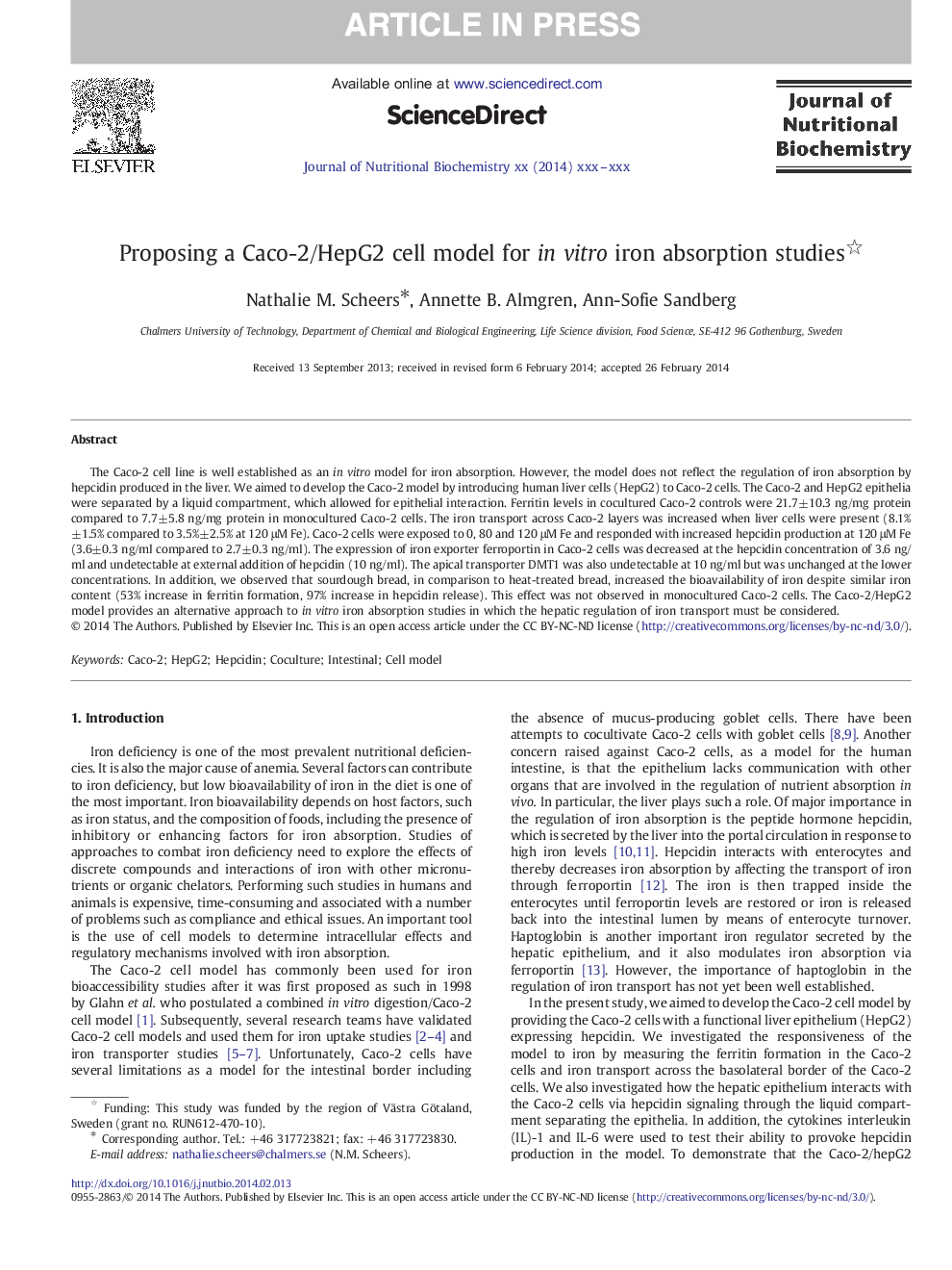| Article ID | Journal | Published Year | Pages | File Type |
|---|---|---|---|---|
| 8337192 | The Journal of Nutritional Biochemistry | 2014 | 6 Pages |
Abstract
The Caco-2 cell line is well established as an in vitro model for iron absorption. However, the model does not reflect the regulation of iron absorption by hepcidin produced in the liver. We aimed to develop the Caco-2 model by introducing human liver cells (HepG2) to Caco-2 cells. The Caco-2 and HepG2 epithelia were separated by a liquid compartment, which allowed for epithelial interaction. Ferritin levels in cocultured Caco-2 controls were 21.7±10.3 ng/mg protein compared to 7.7±5.8 ng/mg protein in monocultured Caco-2 cells. The iron transport across Caco-2 layers was increased when liver cells were present (8.1%±1.5% compared to 3.5%±2.5% at 120 μM Fe). Caco-2 cells were exposed to 0, 80 and 120 μM Fe and responded with increased hepcidin production at 120 μM Fe (3.6±0.3 ng/ml compared to 2.7±0.3 ng/ml). The expression of iron exporter ferroportin in Caco-2 cells was decreased at the hepcidin concentration of 3.6 ng/ml and undetectable at external addition of hepcidin (10 ng/ml). The apical transporter DMT1 was also undetectable at 10 ng/ml but was unchanged at the lower concentrations. In addition, we observed that sourdough bread, in comparison to heat-treated bread, increased the bioavailability of iron despite similar iron content (53% increase in ferritin formation, 97% increase in hepcidin release). This effect was not observed in monocultured Caco-2 cells. The Caco-2/HepG2 model provides an alternative approach to in vitro iron absorption studies in which the hepatic regulation of iron transport must be considered.
Related Topics
Life Sciences
Biochemistry, Genetics and Molecular Biology
Biochemistry
Authors
Nathalie M. Scheers, Annette B. Almgren, Ann-Sofie Sandberg,
